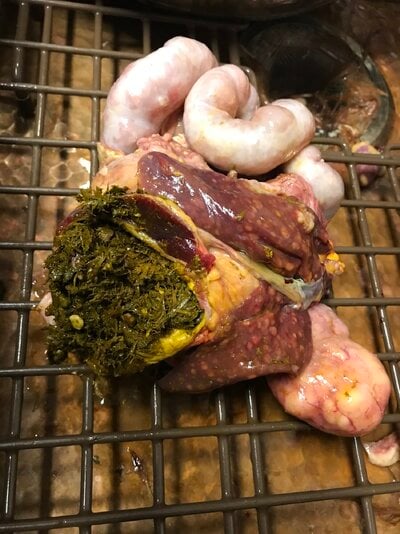Penny_royal
Chirping
- Feb 12, 2023
- 16
- 29
- 51
Hi everyone. I’ve tried everything to help my girl, but I’m at a loss now. Here are the main points and what I’ve tried:
-noticed sour crop 7 days ago: started garlic water, yeast infection cream, egg yolk, and electrolytes. Gnext couple days, gave epsom salt bath, and some epsom salt drink. Checked for eggbound egg: I couldn’t feel anything in her vent but she has a firm yet slightly squish-able lump on left bottom of abdomen.
No change.
She is pooping (diarrhea) small amounts. Her abdomen has been swelling with water. Today I got the courage to try to drain some of it for her comfort. Fluid is dark yellow.
Have given her IV fluids for four days trying to get her to stabilize a bit/help her body do what it needs to do. Fed small bites of high protein cat food with some antibiotic. Checked again for eggbound egg: couldn’t feel one in her vent. Lump on left is still there: doesn’t seem to have moved.
No change. Still not digesting much, but still pooping a little.
She is alert but a little lethargic
I gave her another epsom salt bath tonight: the diarrhea stuck to her bottom was grainy. Reminded me of crushed egg shell but was hard to tell as it was rather fine.
Guys: I’m out of ideas. Do you think she is egg-bound? If she has sour crop, can I give her anything to help her pass the egg or no? Will water belly make it harder for her to digest/pass an egg if there is one?
Please help me, I want to understand if I can help her.
-noticed sour crop 7 days ago: started garlic water, yeast infection cream, egg yolk, and electrolytes. Gnext couple days, gave epsom salt bath, and some epsom salt drink. Checked for eggbound egg: I couldn’t feel anything in her vent but she has a firm yet slightly squish-able lump on left bottom of abdomen.
No change.
She is pooping (diarrhea) small amounts. Her abdomen has been swelling with water. Today I got the courage to try to drain some of it for her comfort. Fluid is dark yellow.
Have given her IV fluids for four days trying to get her to stabilize a bit/help her body do what it needs to do. Fed small bites of high protein cat food with some antibiotic. Checked again for eggbound egg: couldn’t feel one in her vent. Lump on left is still there: doesn’t seem to have moved.
No change. Still not digesting much, but still pooping a little.
She is alert but a little lethargic
I gave her another epsom salt bath tonight: the diarrhea stuck to her bottom was grainy. Reminded me of crushed egg shell but was hard to tell as it was rather fine.
Guys: I’m out of ideas. Do you think she is egg-bound? If she has sour crop, can I give her anything to help her pass the egg or no? Will water belly make it harder for her to digest/pass an egg if there is one?
Please help me, I want to understand if I can help her.





